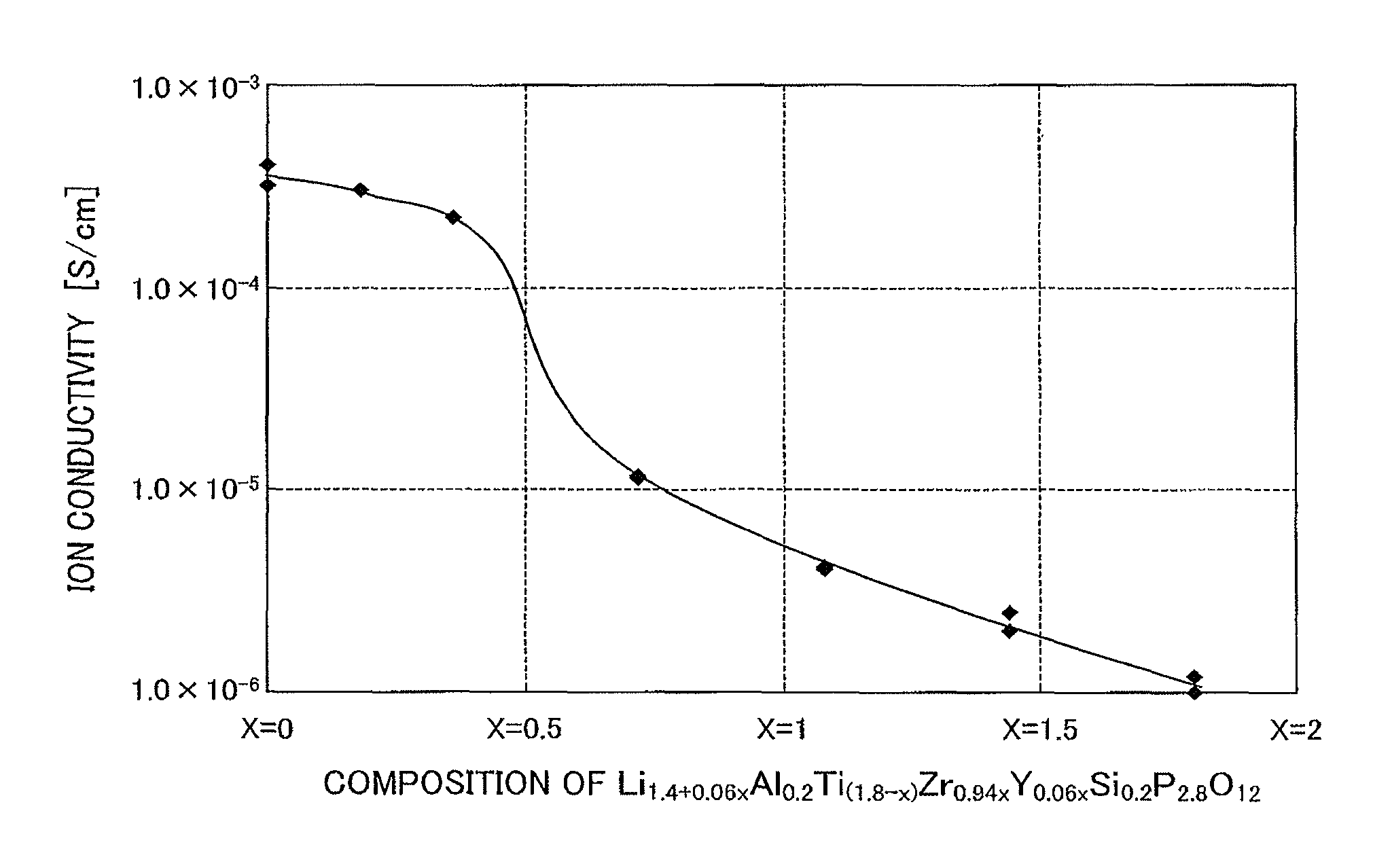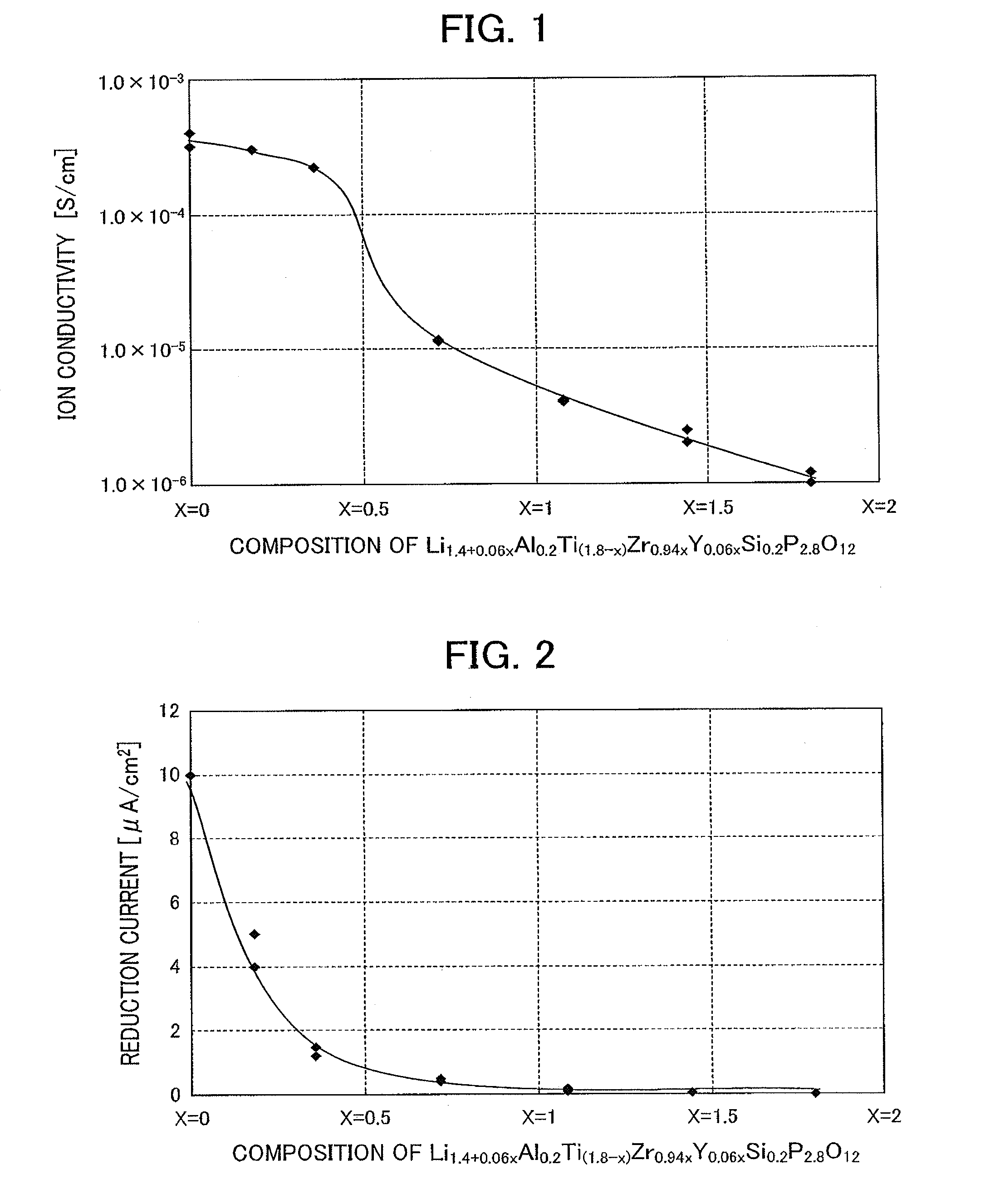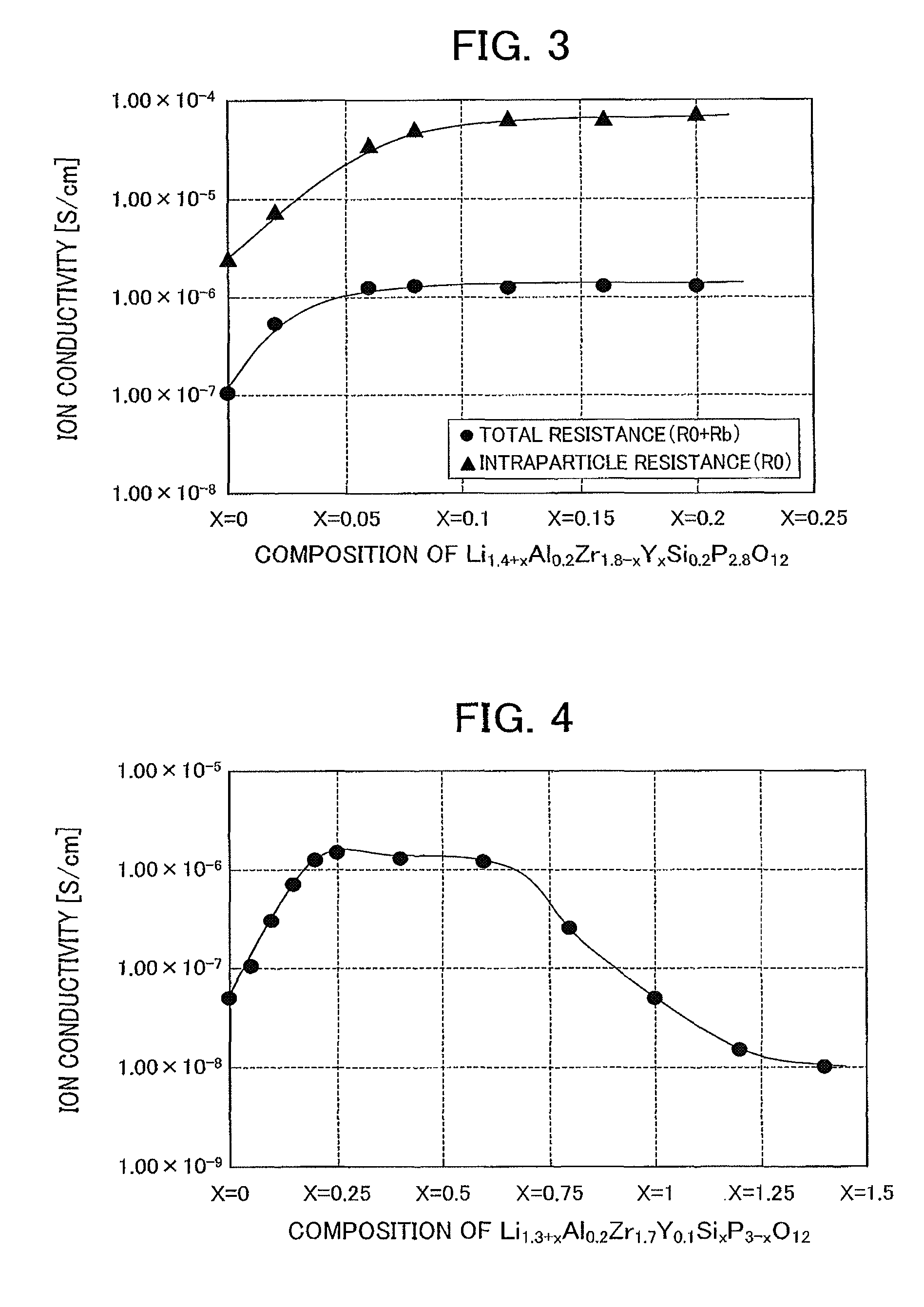Lithium ion conductive inorganic substance
a technology of inorganic substances and lithium ions, which is applied in the direction of non-metal conductors, non-aqueous electrolyte cells, cell components, etc., can solve the problem that the charge-discharge voltage cannot be increased, and achieve the effect of improving the charge-discharge properties of batteries and enlarging the charge-discharge voltage of batteries
- Summary
- Abstract
- Description
- Claims
- Application Information
AI Technical Summary
Benefits of technology
Problems solved by technology
Method used
Image
Examples
examples
[0075]Hereinafter, the present invention is explained by providing specific examples.
examples 1 to 14
[0076]A lithium ion conductive inorganic substance expressed by the general formula Li1.4+0.06xAl0.2Ti(1.8−x)ZrO0.94xY0.06xSi0.2P2.8O12 was evaluated for ion conductivity and reduction resistance with respect to the lithium ion conductive inorganic substance of which Ti was substituted with 6 mol % of Y and 94 mol % of Zr. Here, Table 1 shows a substituted amount x which indicates the amount of Ti substituted by 6 mol % of 1 and 94 mol % of Zr, and the values of the composition on an oxide basis, ion conductivity, and current density of the reduction current of the lithium ion conductive inorganic substance. Furthermore, FIG. 1 shows a relation between the substituted amount x and the ion conductivity, and FIG. 2 shows a relation between the substituted amount x and the reduction current. Here, Examples 1 and 2 are reference examples in which the substituted amount x is 0.
[0077]The lithium ion conductive inorganic substance was prepared using Li2CO3, TiO2, H3PO4, Al(PO3)3, ZrO2, Y2O...
examples 15 to 21
[0082]A lithium ion conductive inorganic substance expressed by the general formula Li1.4+xAl0.2Zr1.8−xYxSi0.2P2.8O12 was evaluated for a resistance value of lithium ion conductive inorganic substance when the contents of Zr and Y in the lithium ion conductive inorganic substance were changed; that is, the intraparticle resistance (Ro) and total resistance of the lithium ion conductive inorganic substance (Ro+Rb) were evaluated, and the ion conductivity was calculated from the resistance values. Here, Table 2 shows a substituted amount x which indicates the amount of Zr substituted with Y, the composition on an oxide basis of the lithium ion conductive inorganic substance, and resistance value of the lithium ion conductive inorganic substance. Furthermore, FIG. 3 shows a relation between the substituted amount x and the resistance value.
[0083]The lithium ion conductive inorganic substance was prepared using Li2CO3, TiO2, H3PO4, Al(PO3)3, ZrO2, Y2O3, and SiO2 as raw materials, and th...
PUM
| Property | Measurement | Unit |
|---|---|---|
| mass ratio | aaaaa | aaaaa |
| lithium ion conductivity | aaaaa | aaaaa |
| current density | aaaaa | aaaaa |
Abstract
Description
Claims
Application Information
 Login to View More
Login to View More - Generate Ideas
- Intellectual Property
- Life Sciences
- Materials
- Tech Scout
- Unparalleled Data Quality
- Higher Quality Content
- 60% Fewer Hallucinations
Browse by: Latest US Patents, China's latest patents, Technical Efficacy Thesaurus, Application Domain, Technology Topic, Popular Technical Reports.
© 2025 PatSnap. All rights reserved.Legal|Privacy policy|Modern Slavery Act Transparency Statement|Sitemap|About US| Contact US: help@patsnap.com



